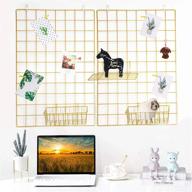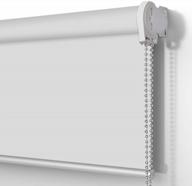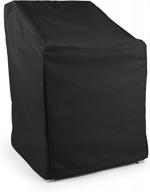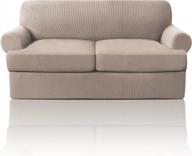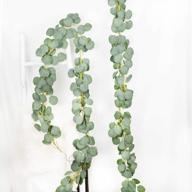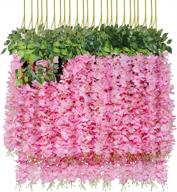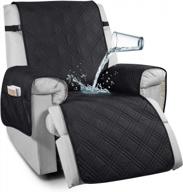What Are Slipcovers and Why Use Them?
Slipcovers are removable fabric covers designed to go over upholstered furniture like couches, chairs, and ottomans. They can completely transform the look of a room by changing the appearance of your furniture. Here are some of the main benefits of using slipcovers:
Similar products
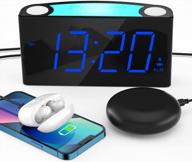

47 Review

Protect Furniture from Wear and Tear
Slipcovers protect the upholstery fabric on your furniture from daily wear, stains, and pets. Having covers that can be removed and washed frequently keeps your expensive upholstered furniture looking new for longer.
Top products in 🛋️ Slipcovers
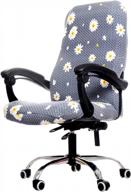

40 Review

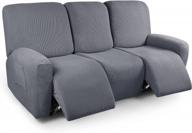

41 Review

Change Decor with the Seasons
Slipcovers allow you to easily change your decor to match the seasons or holidays. For example:
- Light, breezy fabrics in spring and summer
- Warm, cozy fabrics in fall and winter
- Red and green patterns for Christmas
You can switch slipcovers out whenever you feel like giving your room a fresh new look.
Hide Outdated or Worn Furniture
Don't want to spend money on buying new furniture? Slipcovers can disguise worn, faded upholstery or hide outdated fabric prints and colors. Choose a neutral solid color or patterned slipcover to give tired furniture a facelift.
Customize Your Style
Since they come off easily, you can get creative with mixing and matching slipcover patterns and fabrics to really make your furniture your own. For example:
- Add some visual interest by mixing prints on separate sofa and chair slipcovers.
- Layer different slipcovers on one piece for a eclectic layered look.
- Use accent pillows and throws that pick up colors from your slipcovers.
The options are endless for creating a personalized style with slipcovers!
Kid and Pet Friendly
Slipcovers can make living rooms more family friendly. The removable covers allow you to launder away crumbs, spills, and pet hair easily. Plus, the fabrics are durable to stand up to wear from kids and pets.
So if you're looking to protect your furniture, change up your decor, disguise worn upholstery, add your own unique style, or make your home more kid and pet friendly, consider using stylish and versatile slipcovers.
Another interesting products
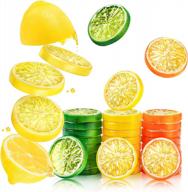

34 Review



41 Review

Choosing the Right Slipcover for Your Furniture
With so many options for fabrics, patterns, and styles, it can be overwhelming to choose the perfect slipcovers for your furniture. Here are some tips to help you select slipcovers that will look great and perform well in your home.
Measure Carefully
The most important step is to carefully measure each piece of furniture you want to cover. This ensures a proper fit. Follow these steps:
- Measure length, width, and height of the furniture item.
- For sofas and chairs, measure the length/width of the arms, back, seating area, and inside corners.
- Note details like welting, skirts, and cushions.
Having all the measurements will allow you to customize the slipcover to fit your furniture precisely.
Fabric Considerations
Fabric choice can make or break your slipcover. Be sure to consider:
- Fiber content - Cotton and cotton blends are best for durability and easy laundering. Avoid delicate fabrics like silk or rayon unless furniture is rarely used.
- Weave - Tighter weaves resist snags/tears. Broadcloth or twill work well.
- Weight - Medium to heavy weight stands up better to use over time.
- Pattern - Busy prints and light colors show stains/dirt more. Subtle patterns or solids hide wear better.
- Texture - Smoother, flatter fabrics hug furniture tighter. Embossed fabrics add dimension.
Construction Quality
Well-constructed slipcovers last longer. Look for:
- Reinforced seams, hems, and edges
- French or felled seams for durability
- Zipper, button, or snap closures to keep cover securely in place
- Allowance for shrinkage with pre-washing
Custom slipcovers specifically cut to your measurements and sewn for a custom fit have the best construction.
Styling Options
Think about how you want your slipcovers to look:
- Fitted - A tight, tailored look with invisible, elasticized edges.
- Relaxed - A softer draping style with a casual, wrinkled appearance.
- Crisp corners - For a smoother, cleaner lined style obtained by interfacing the corners.
- Softened corners - Rounded, flowing look with eased seams rather than pressed corners.
Consider your furniture shape and style as you choose the look.
Choose Carefully for Your Needs
Finally, match the slipcover to your needs. Ask yourself:
- Is it for everyday use or special occasions?
- Do you need maximum protection from pets or kids?
- Will you change it frequently or leave it on for seasons?
Your needs guide important choices like fabric durability and washability.
Doing your homework helps you select durable, well-fitting slipcovers to suit your furniture, decor, and lifestyle. With the right covers, you'll enjoy renewed style and furniture protection for years.
Slipcover Fabrics - The Pros and Cons of Different Materials
When selecting a fabric for your slipcovers, you'll want to consider performance factors like durability, easy care, and stain resistance. Here's an overview of the characteristics of common slipcover fabrics to help you choose the right material for your needs.
Cotton
Pros:- Breathable and comfortable for everyday use
- Available in many colors and prints
- Gets softer with washing
- Easy to launder and wrinkle-resistant
- Can pill or fray over time
- Prone to shrinking if improperly washed
- Stains may be difficult to remove
- May not hold crisp shape as well as other fabrics
Cotton Blends
Pros:- Enjoy comfort of cotton combined with durability of polyester or spandex
- Often more wrinkle-resistant than pure cotton
- Poly-cotton good for family-friendly slipcovers
- Spandex blends provide stretchy, form-fitting covers
- Pilling and fading still possible over time
- Not as breathable as 100% cotton
Linen
Pros:- Lightweight and breathable for airflow
- Has natural slubbed texture
- Drapes beautifully over furniture
- Wrinkles easily
- Can be prone to mildew if not properly cared for
- Difficult to clean
- Not as family-friendly or durable as other fabrics
Microfiber
Pros:- Extremely durable and stain resistant
- Soft, smooth feel mimics more expensive fabrics
- Great for protecting furniture from heavy use
- Affordable option good for kids, pets, and high traffic areas
- Can look and feel "plastic-y" or fake
- Not breathable for warm climates
- Prone to pilling
Velvet
Pros:- Luxurious look and touch
- Doesn't show wear easily
- Rich colors and sheen hide stains
- Delicate pile wears down over time
- Difficult to clean and launder
- Marks from crushing are hard to remove
- Not ideal for high-traffic areas
Do your homework on fabric qualities to select the right slipcover material for your needs. The investment will pay off with durable, easy-care covers that keep your furniture looking fabulous.
How to Make Your Own Custom Slipcovers on a Budget
Looking to protect your furniture or give your room a style upgrade, but don't want to spend a lot? Making your own custom slipcovers is an affordable solution. With some fabric, supplies, and sewing skills, you can create a perfect fitting slipcover tailored to your furniture.
Planning Your Slipcover Design
Before starting, consider:
- What furniture will you cover (sofa, chair, ottoman etc)?
- What fabric type and color/pattern do you want?
- What closure style makes sense (zippers, ties, buttons)?
- Do you want a relaxed drape or smoother fitted look?
Take Precise Measurements
Accurate measurements ensure a well-fitting slipcover. Measure:
- Overall length, width, and height of furniture
- Length, width, height of individual cushions
- Arm width, length and height
- Inside and outside legs
- Any skirts, welting or details
Buy Fabrics Economically
You can make slipcovers surprisingly affordably using:
- Discount or thrift store bedsheets and curtains
- Sale upholstery fabrics from craft stores
- Cheaper muslin for mockups adjusted before using final fabric
- Old tablecloths, blankets or dropcloths
Sewing Tips
Follow these sewing steps for best results:
- Prewash and dry fabrics before sewing to account for shrinkage
- Cut fabric pieces using your measurements and pattern drafting
- Reinforce edges and seams with French or felled seams for durability
- Use interfacing on corners and edges to hold shape
- Allow for generous seam allowances up to 1-1.5 inches
Finishing Touches
Finish your budget slipcovers with details like:
- Closures - zippers, ties, Velcro, buttons
- Trims - cording, fringe, contrast fabric accents
- Topstitching or embroidery for decorative detail
Follow care instructions to properly launder and care for your covers, and you've got beautiful custom slipcovers on a budget!
Tips for Properly Measuring Furniture for Slipcovers
Taking accurate measurements is crucial for slipcovers that fit your furniture flawlessly. Here are some tips for measuring furniture properly:
Measure Twice
Measure each dimension twice to ensure accuracy. Write down both measurements to compare and catch any errors.
Note All Dimensions
Measure and record the length, width, and height for:
- Overall piece of furniture
- Arms, back, seats, cushions etc.
- Any skirts, welting, trim or other details
Measure Seat Width at Front and Back
Seat cushions often slant backward so measure width at both the front and back edges.
Check for Square
Use a carpenter's square to ensure the furniture has square corners and is not skewed.
Note Arm Styles
Specify if arms are straight, curved, rolled, or have a specific shape.
Measure Inner Leg Length
In addition to outer length, measure inner length from floor to bottom of furniture frame.
Measure Furniture at Resting State
Measure furniture as it sits normally without moving cushions and pillows.
Include Height of Legs
Measure from floor to bottom edge of furniture frame to account for leg height.
Document with Photos
Take photos of the furniture from all angles to compare to your measurements.
Following these tips will result in slipcovers with the perfect custom fit for your furniture. Accurate measurements make all the difference when sewing slipcovers!
Caring for Your Slipcovers - Washing, Repairing, and Replacing
Slipcovers are designed to protect your upholstery and transform your decor. Proper care and maintenance will keep them looking fresh longer. Here are some tips for washing, repairing, and replacing slipcovers.
Regular Laundering
Wash removable slipcovers frequently to avoid buildup of dirt, oils, and grime. Follow any specific washing instructions from the manufacturer. In general:
- Wash in cold water on a gentle cycle. Hot water risks shrinkage.
- Use a mild detergent without bleach or fabric softener.
- Air dry or tumble dry on low heat.
For stubborn stains, spot treat with a mild cleaner before washing. Always pre-treat new slipcovers to minimize shrinkage.
In-Between Cleaning
To freshen slipcovers between washes:
- Vacuum frequently using an upholstery attachment.
- Spot clean stains immediately with a damp cloth.
- Use a fabric shaver to remove pilling or fuzz.
- Steam wrinkles and creases out rather than ironing.
Storage
When removing slipcovers for seasonal storage:
- Launder first and allow to fully dry.
- Fold smoothly along seams and place in a clean plastic bin.
- Put cedar blocks in bin to deter moths and prevent musty odors.
- Store in a climate controlled area to prevent mildew.
Repairminor damage
Act quickly when slipcovers become damaged to prevent further deterioration. Common repairs include:
- Reinforce seams or hems coming undone with iron-on adhesive binding tape.
- Hand-stitch small holes, tears or seam splits.
- Replace broken zippers or snaps.
- Use fabric glue to reattach decor details like tabs or trim.
Know When to Replace
Look for slipping signs your slipcovers need replacement:
- Fabric is badly frayed, stained, or has holes.
- Covers are ill-fitting due to significant shrinkage.
- Zippers or closures won't stay fastened.
- Fabric has become thin, deteriorated or threadbare.
Shop for new covers when repair is no longer an option. Protect your purchase by following proper slipcover care guidelines from the start.
Decorating with Slipcovers - Coordinating Colors and Patterns
A coordinated slipcover scheme is an easy way to pull together your room's decor. Whether you want to blend seamlessly or make a bold statement, follow some basic design principles for decorating with slipcovers.
Match Furniture Style
Choose slipcover styles and fabrics that complement your existing furniture style. For example:
- Traditional furniture looks best with classic fabrics like damask or tapestry.
- Modern furniture pairs well with solid colors or simple geometric prints.
- Casual cottage furniture works with florals and relaxed seersucker fabrics.
Coordinate Colors
Plan colors across your slipcovers. Possibilities include:
- Monochromatic look using shades of one color.
- Complementary colors like navy and tan.
- Bright and neutral color combos such as red and white.
- Tonal plan with related hues like beige, brown and taupe.
Repeat Fabric Patterns
Using the same fabric pattern on all seats in a room creates cohesion. Or, vary patterns on each seat but use same color scheme.
Mix and Match Patterns
Make a bold statement by combining different slipcover prints. Some tips:
- Limit to 2-3 coordinated patterns.
- Repeat one color across patterns to tie them together.
- Use similar scale prints (all large or small motifs).
- Separate large florals and small geometrics.
Layer Textures
Add visual interest by using slipcovers with different fabrics. For example, combine:
- Velvet chair with linen sofa
- Cotton slipcover with wool throw
- Smooth fabric with nubby knit
Mixing complementary textures creates a cozy, collected look.
Incorporate Room Accents
Carry over slipcover colors into pillows, throws, rugs and wall decor for a pulled-together design.
With some planning, you can easily decorate with slipcovers to create a coordinated, stylish room.
Benefits of Amazon Prime for Buying Slipcovers
An Amazon Prime membership provides several advantages if you're shopping on Amazon for new slipcovers. Here are some of the top benefits Prime offers for slipcover purchases:
Free Two-Day Shipping
Prime members get free two-day shipping on eligible slipcover purchases. This allows you to get your new covers quickly rather than waiting over a week for standard shipping. It's ideal if you need new slipcovers fast for an upcoming event or season change.
Free Returns
Amazon Prime includes free returns within 30 days on eligible items. This makes it easy to order slipcovers to try on your furniture, and return them if they aren't the perfect fit or style for your space. You can order a few different options and return what you don't like.
Try Before You Buy
Through Prime Wardrobe, you can try eligible slipcovers on for up to 7 days before committing to buy them. This allows you to test slipcovers in your home to ensure they are the right size, fabric quality and style before purchasing.
Access to Exclusive Deals
Prime members get 30-minute early access to Lightning Deals on slipcovers. You can take advantage of limited time low prices and discounts before non-Prime members. This allows you to score slipcovers on sale for an even better price.
Streamlined Reordering
With Prime, you can save slipcovers you've purchased to a List for easy reordering later. This allows you to quickly replace worn out slipcovers or buy coordinating prints without having to search again.
Overall, an Amazon Prime membership provides perks like fast shipping, free returns, try before you buy and exclusive deals that can make shopping for slipcovers much easier.
How To Choose The Right Slipcover For Your Furniture?
Choosing the right slipcover for your furniture can be a daunting task, but here are some tips to help you make the right decision:
- Determine the fit and shape you will need by examining the shape of the seat, arms, legs, cushions, and back of your furniture to determine the type of slipcover that will fit best.
- Choose a slipcover that fits the lines of your sofa or chair more closely for a more formal look, or select a loose or relaxed look for a casual effect.
- Consider the fabric weight of the slipcover. As a general rule, it is best to avoid very heavy upholstery fabrics such as chenille and velvets as they may not adapt very well to the shape of a sofa or chair. Slipcover fabric should usually be of medium-weight to more easily fit over your furniture.
- Choose a material that has the right balance of durability and style.
- Look for slipcovers with non-slip backing if you have pets or rambunctious kids.
- Measure the overall length, width, height, and depth of your furniture to confidently choose the right type of slipcover.
Do Slipcovers Ever Look Good
Yes, slipcovers can look good and stylish. There are many options available that can give your furniture a new lease on life and transform your living space. Here are some examples:
- Cosmopolitan recommends some of the best couch slipcovers of 2023 that don't look like they were pulled straight out of the '80s.
- Etsy offers unique and custom handmade couch covers that can add a personal touch to your furniture.
- Amazon has a sofa cover with a retro boho aesthetic style that can add a unique and stylish look to your living room.
- SlipCoverShop offers custom sofa slipcovers that can perfectly suit your home and design aesthetic.
- Walmart has a sofa slipcover that provides full protection and has an aesthetic design.
- SureFit offers custom slipcovers that can give your worn-out seating a new life with their exclusive selection of exciting colors, fabrics, and styles.





